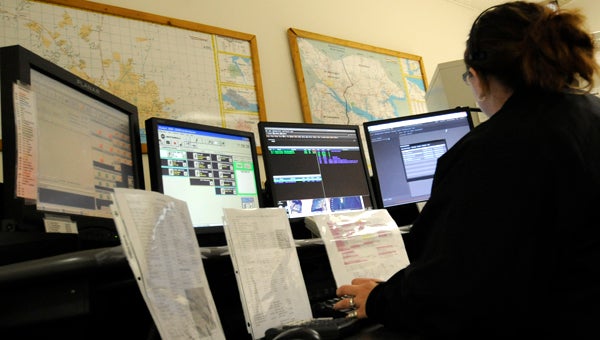County to transition to emergency medical dispatch
Published 6:23 pm Saturday, September 12, 2015

VAIL STEWART RUMLEY | DAILY NEWS
COMING SOON: More software training for Beaufort County telecommunicators is in the future as the county will transition to emergency medical dispatch (EMD) in the coming months. The move will allow dispatch to walk 911 callers through basic medical measures, like CPR, until EMTs arrive at the scene.
In June, two emergency calls came into Brunswick County dispatch, both reporting amputations by shark bite in the shallow waters off Oak Island. One telecommunicator took both calls that came in roughly an hour apart. One telecommunicator walked witnesses through procedures that helped saved the lives of a 12-year-old girl and a 16-year-old boy, while paramedics were on their way to the scene.
Soon, Beaufort County telecommunicators will be able to walk 911 callers through the steps that could save a life before EMS arrives. While Beaufort County doesn’t see many shark bites, its residents have other issues — heart issues, diabetic issues, trauma issues — having someone on the phone who can help callers help the person in distress is critical, according John Flemming, Beaufort County EMS director.
“Being able to walk someone through CPR over the phone — it increases the likelihood of survival,” Flemming said.
Beaufort County will be making the transition to Emergency Medical Dispatch (EMD) by January 2016, according to county Communications Director Vic Williams. Between now and then, half the county telecommunicators will be in training and learning the associated software; the other half, those who’ve completed training in previous years, will be getting a refresher course before EMD is rolled out and melded with existing parts of the communications system, Williams said.
EMD will change the course of every 911 call, he said, because it will allow telecommunicators to not only help patients via phone, but determine what units respond based on set criteria, Williams said.
“It actually allows the telecommunicators to prioritize the types of calls that are coming in,” Williams said. “The software will categorize and determine what level of service (is needed), what level of care.”
“I’ve worked in several EMD dispatch counties and being able to prioritize the calls and being able to get the right unit and the closest unit to the call really, really, does make a difference,” Flemming said.
“Saving lives — that’s the main benefit. Counties that have implemented it saw results in the first week,” Williams said. “I see this as another addition to the whole plan.”
The whole plan includes the many ways pre-hospital care is being strengthened in the county, Williams said. Over the past year, many county EMS squads have transitioned to paramedic level. Broadening the reach of those paramedics through Quick Response Vehicles to be strategically placed in gaps in the county’s service areas; establishing Washington as a home base for one of the Vidant EastCare helicopters; providing “First Responder” training for fire department volunteers who often arrive at a scene before EMS can — these are all ways that service is being built up to provide the best emergency medical system possible to county residents, according to Flemming. But as a rural county, especially one that lacks emergency medical facilities in the eastern part of the county, both north and south of the Pamlico River, EMD is of primary importance. While the N.C. Office of Emergency Medical Services has set a goal for EMTs of eight minutes between time of 911 call and time of arrival on the scene, in Beaufort County distance and availability in certain cases have hampered response times. With EMD, patient care does not start with the arrival EMS, but with the 911 call.
“Each of those pieces of the puzzle that we’re putting together brings us to a stronger EMS system for the citizens of Beaufort County,” Flemming said. “One piece doesn’t make the puzzle, but all the pieces together will make for a strong system.”
Williams said it will change how telecommunicators interact with callers — they’ll be asking a set list of questions from which they cannot deviate.
“What people need to realize is that these telecommunicators need to ask every question,” Williams said. “They’re just trying to get the information they need to get the right help there. … Once they’re engaged in that call, they’re locked in.”
Because telecommunicators will get “locked in” to calls, it will also mean scheduling shifts for the staff of 12 to provide more dispatchers during the peak hours of noon to midnight. Williams said the county dispatch team is taking the coming changes, and learning new software, in stride.
“We’re blessed right now that we have a group of telecommunicators that love what they do,” Williams said. “They’re in it for the right reasons. They see it as just one more thing they can do to allow them, at the end of the day, to say, ‘I saved some lives.’”





